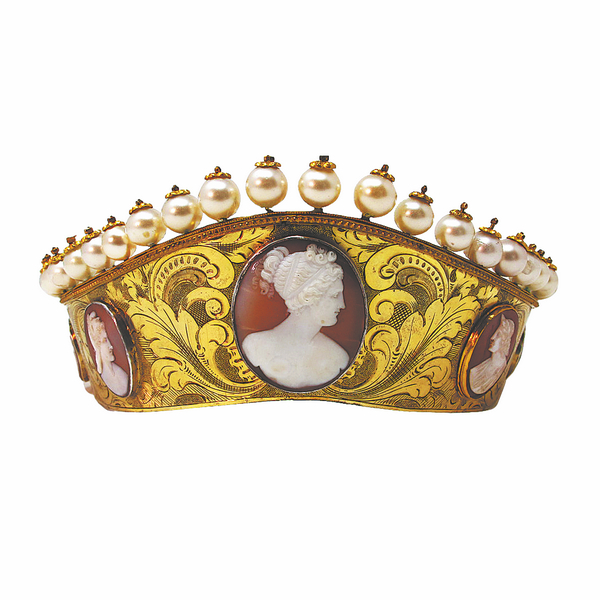Exhibition puts stage jewelry in the spotlight


After the successful exhibition in Paris last year, the organizers decided to present it in Shanghai, with added content for better comprehension for Chinese audiences.
An added introduction explains the historical context of the stage jewelry and the Comedie-Francaise. Posters, tickets, prints, a relief model of the auditorium, and a video of the annual Homage to Moliere (1622-73) ceremony immerse visitors in a 19th-century Paris theater experience.
Also known as Maison de Moliere, the theater commemorates the dramatist's legacy annually. A replica of a marble bust of Moliere sits center stage every Jan 15 to receive tributes from actors and audiences.
Special artifacts connected to Chinese culture have also been added to the Shanghai exhibition, such as an original costume robe used in the play The Orphan of China.
The French play was adapted by writer Voltaire (1694-1778) from the Chinese play The Orphan of Zhao by Ji Junxiang, who is thought to have lived in the 13th century. In his adaptation, Voltaire transposes the action to the Imperial Palace in Peking, and the robe bears witness to a real consideration for authenticity in the choice of silks and Chinese motifs.
The back of the robe of the hero Zamti, played by Pierre-Claude Sarrazin, features embroidery reminiscent of the Chinese character "deng", which means ascension.
According to Louis-Gilles Pairault, archivist and curator of the Library-Museum of the Comedie-Francaise, the Parisian public was so captivated by the tragedy's combination of exoticism and philosophical reflection that it stayed in the company's repertoire until 1833.
A Peking Opera costume worn by its Chinese theater counterpart is displayed next to the French one, creating a vivid cultural dialogue.




































